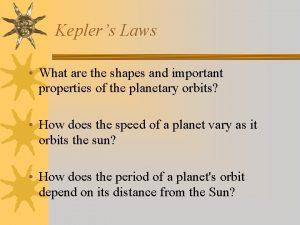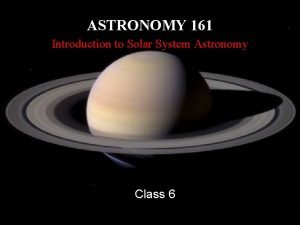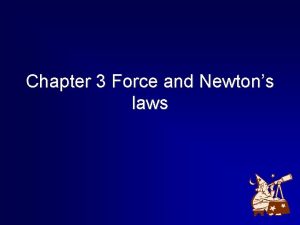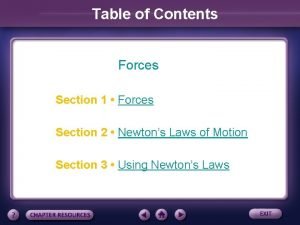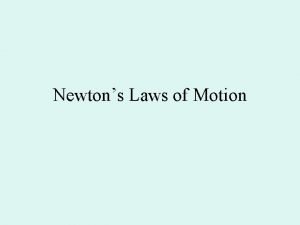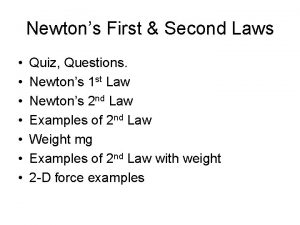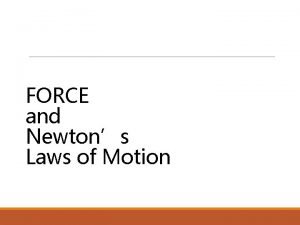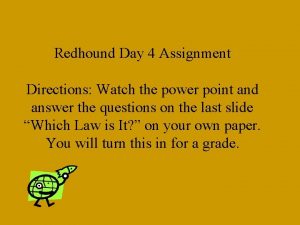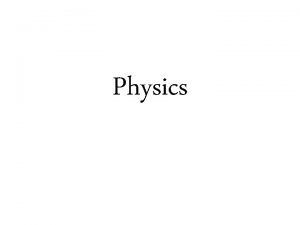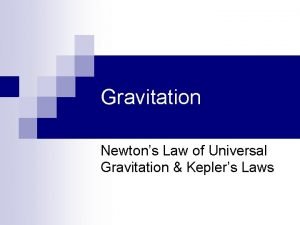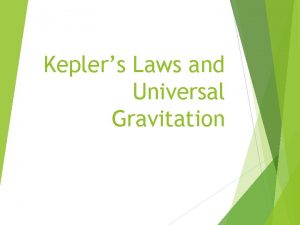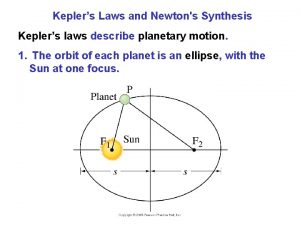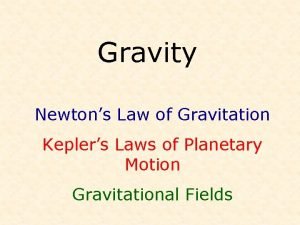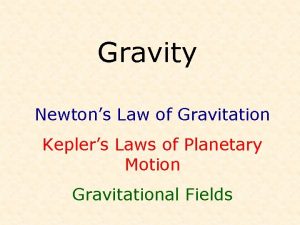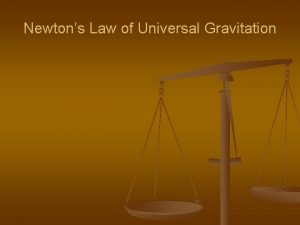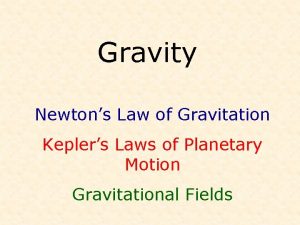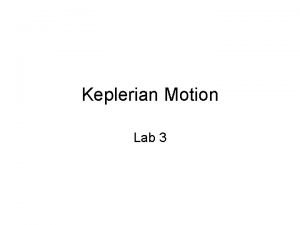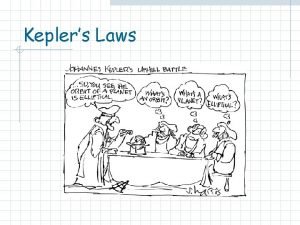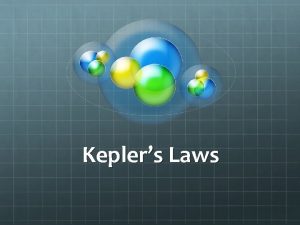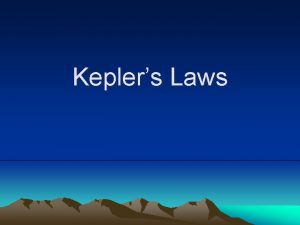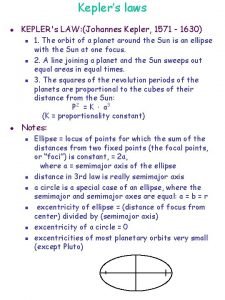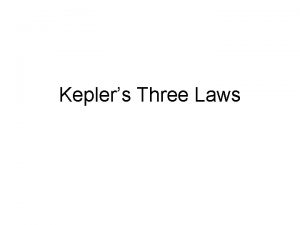Gravitation Newtons Law of Gravitation Keplers Laws of


















- Slides: 18

Gravitation Newton’s Law of Gravitation; Kepler’s Laws of Planetary Motion. Lecture 14 Monday: 1 March 2004

Physical Principles of Design Forces and Motion • Learning to analyze and predict the motion of objects moving with constant accelerations. Topics of kinematics, projectile motion …. • Coming to understand the causes of motions and changes in motion-topics of (linear and rotational) forces, momentum, energy… • Forces we have encountered: frictional force, normal force, applied forces of pushes/pulls, tension in strings, and the GRAVITATIONAL FORCE

How Many Different Forces are There? • All of the forces we have worked with or will work with are specific examples of following general types of forces: The Fundamental Forces of Nature: 1. Gravitational Force 2. Electromagnetic Force 3. Strong Force (Nuclear) 4. Weak Force (Nuclear)

A General Expression for the Gravitational Force

Revisiting Gravitational Force More Specifically, Where , is the acceleration due to the earth’s gravitational attraction. It is not only the earth that attracts other objects. Any object with mass will attract any other object with mass.

At the surface of the Earth

Characteristics of the Gravitational Force • The force is always attractive. • There is a Newton’s third law force pair involved. • It acts along a line connecting the centers of the two objects (called a Central Force) • It is inversely proportional to r 2 (called a “one over r squared” force) • Experimental measurement show us that it is a conservative force (the gravitational force on earth is conservative-remember? This is a general expression of that same force)

Defining the Potential Energy Associated with this Force

POTENTIAL ENERGY • Choose U = 0 at r = ¥

Gravitational Potential Energy Near Earth

KEPLER'S LAWS 1. The Law of Orbits: All planets move in elliptical orbits having the Sun at one focus. 2. The Law of Areas: A line joining any planet to the Sun sweeps out equal areas in equal times.


The Law of Areas


KEPLER'S LAWS 3. The Law of Periods: The square of the period of any planet about the Sun is proportional to the cube of the semimajor axis of its orbit.

The Law of Periods

ENERGY IN CIRCULAR ORBITS

 Kepler law
Kepler law Kepler's 3 laws of motion
Kepler's 3 laws of motion Kepler's laws
Kepler's laws Keplers phase funnel
Keplers phase funnel Universal gravity constant
Universal gravity constant Newton's law
Newton's law Newtons 3 rd law example
Newtons 3 rd law example Newtons laws of gravity
Newtons laws of gravity Section 3 using newton's laws
Section 3 using newton's laws Section 3 using newtons laws
Section 3 using newtons laws Section 3 using newtons laws
Section 3 using newtons laws Colin skateboards down the sidewalk
Colin skateboards down the sidewalk Find the mass of a football player who weighs 1250 n
Find the mass of a football player who weighs 1250 n What are newton's 3 laws
What are newton's 3 laws Newton's first and second law quiz
Newton's first and second law quiz Newton's 3rd law example
Newton's 3rd law example Newton's 3 laws
Newton's 3 laws Vector diagram
Vector diagram Newton three law of motion
Newton three law of motion
